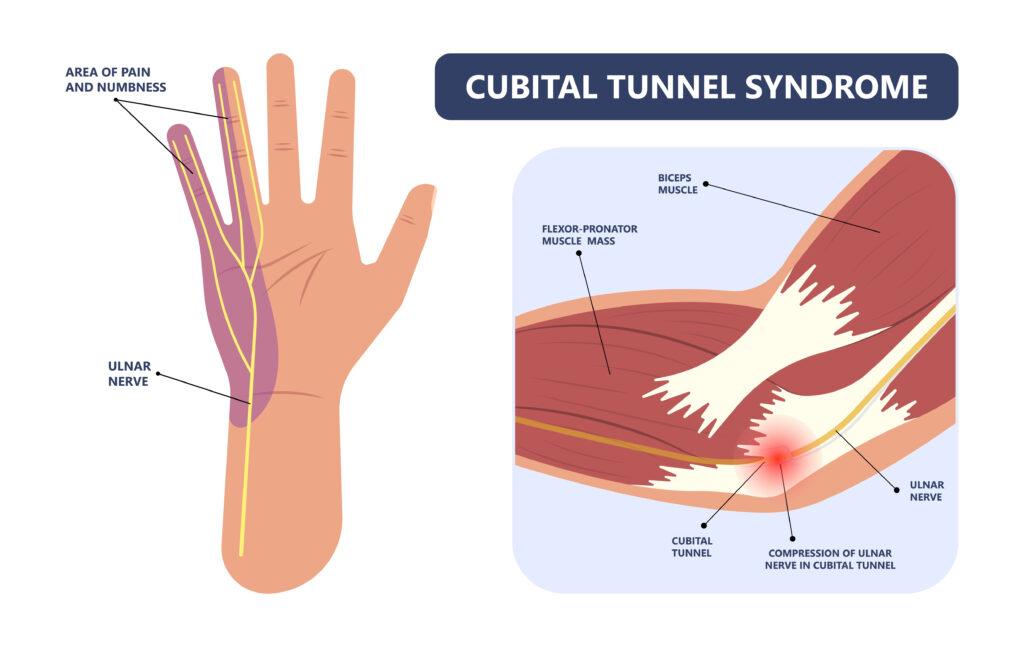Cubital Tunnel Syndrome Treatment in Manhattan Beach and Torrance, CA

What is Cubital Tunnel Syndrome?
Cubital tunnel syndrome is cause by a pinched nerve at the elbow. It is similar to carpal tunnel syndrome in that it is due to a nerve compression near a bony tunnel. Carpal tunnel syndrome is compression of the median nerve at the wrist, while cubital tunnel syndrome is compression of the ulnar nerve at the elbow. The ulnar nerve is often referred to as the funny bone.
When you hit this nerve on the inside (medial) aspect of the elbow, it causes pain, numbness and tingling down the arm into the small and ring fingers. In cubital tunnel syndrome, the ulnar nerve gets compressed over time due to tissue build up on the medial aspect of the elbow.
Suffering from cubital tunnel syndrome can be distressing, but there’s hope for relief and restoration. Beach Cities Orthopedics and Sports Medicine, a leading orthopedic surgery clinic in Manhattan Beach and Torrance, California, offers specialized solutions for cubital tunnel syndrome to help you regain comfort and function in your arm.
Dr. Morgan cares for patients in Manhattan Beach, Torrance and surrounding areas. Take the first step toward a pain-free tomorrow!
Is Cubital Tunnel Syndrome Common?
It is more common in men, and occurs more frequently as we age. Symptoms include numbness and tingling into the small and ring finger. Symptoms can be made worse by elbow flexion, direct pressure, or repetitive elbow motion. The diagnosis is made by history and physical exam. Typically, tapping on the nerve at the elbow will reproduce symptoms. Weakness can occur if left untreated. Patients may notice decreased grip strength, an inability to widen or cross the fingers, and difficulty pinching. The diagnosis can be confirmed using nerve conduction and EMG studies.
How is Cubital Tunnel Syndrome Treated?
Initial treatment consists of rest and anti-inflammatories. Reducing the amount of time your elbow is bent and padding the elbow to prevent direct pressure can help. Elbow pads can also be helpful at night to prevent excessive elbow flexion which can lead to worsening symptoms and restless nights. If these non-operative treatments fail, surgery may be considered. Surgery is performed as an outpatient procedure under anesthesia. A small incision is made on the inside part of the elbow. The nerve is identified and freed from the tunnel. All scar tissue and sites of compression are released. After surgery, the elbow will be in a soft dressing. Resumption of normal activity is allowed in about 2-3 weeks after the wound has healed and grip strength has returned.